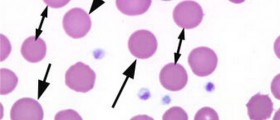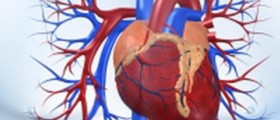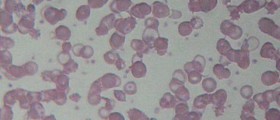
Franconia anemia is not so common inherited blood disorder. The condition leads to bone marrow failure. This means that the boon marrow is not capable of producing blood cell. The blood cells are either insufficient in number or they are atypical therefore not functioning properly. Additionally the disorder may lead to quite severe illnesses such as leukemia. Even though the disorder primarily affects the blood cells it can also cause the damage to other organs and organ systems. The children who have Franconia anemia are born with birth defects and adults suffering from this severe disease tend to develop cancers more than other healthy people. What is important is that Franconia anemia must be distinguished from the Falconry Syndrome in which the kidneys are affected. This syndrome is rare and predominant in children. It features with excessive amounts of key nutrients and chemical agents that are passed with the urine which results in grave health and development problems.
The symptoms of Falconry anemia include anemia, bone marrow failure, birth defects and imperfections, and problems with the development or eating.
Anemia reflects in decreased number of red blood cells. This leads to poorer oxygenation of the organs and organ systems. This results in tiredness, fast heart rate, shortness of breath, rapid breathing, pale skin, and fainting and chest pain.
As for bone marrow failure it reflects in improper or insufficient formation of blood cells. All the blood cells are affected (red blood cells, white blood cells and platelets). The result of fewer red blood cells is anemia. Since the white blood cells are in charge with immunity children who have Franconia anemia suffer from infections more, the infections are cured harder and tend to last longer. Small number of platelets increases the chance of bleeding and the children are prone to bruising. They also develop petechiae (round red spots on the skin due to the bleeding from skin vessels). The worst possible result of the disease is formation of immature white blood cells which are called blasts. Not only they do not function properly but the excessive formation of blasts can lead to acute myeloid leukemia.
Birth defects present in Franconia anemia include defects of bones and skeleton (excessive thumbs or abnormal shape of thumbs, abnormal bones of arms and legs, scoliosis), eye and ear defects (change in shape of ears and eyelids), skin defects (skin discoloration), kidney defects (an absent kidney or changes in shape), congenital heart defects (ventricular sepal defect).
Symptoms that are connected to physical and mental development include low weight at birth, reduced desire for food, postponed growth, mental retardation and problems and disabilities with learning.
In adult females Franconia anemia leads to inappropriate development of sex organs, delayed first menstrual period, earlier menopause, problems with pregnancy (difficulties to conceive and risks of premature delivery). In men the sex organs are not developed to full extent and the fertility is decreased.

















Your thoughts on this
Loading...